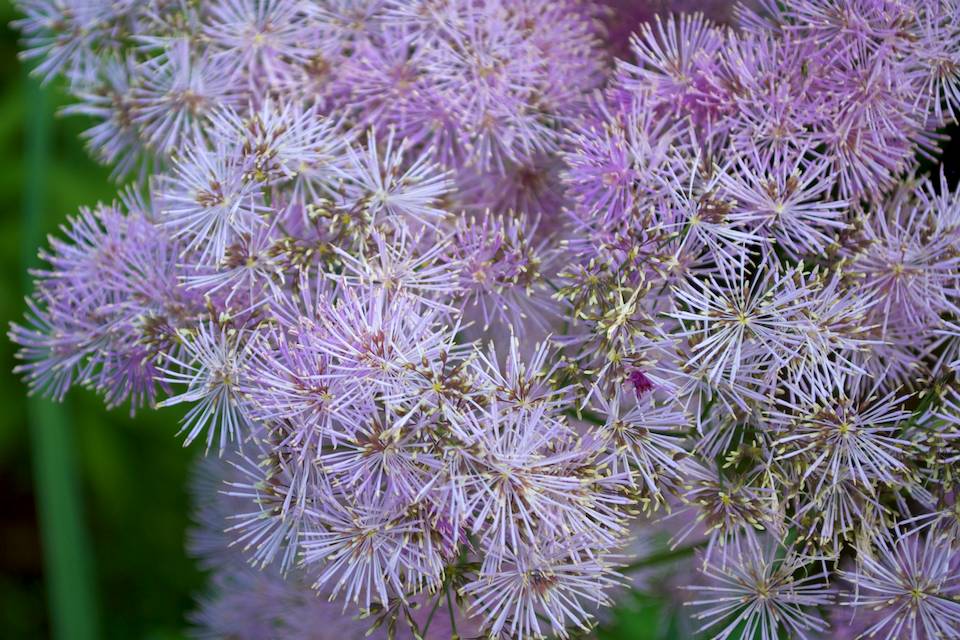Borders must be bonkers, a bulging mass of colour and foliage merging into one. Creating and working borders is tremendous fun and hugely gratifying. As an added bonus, the degree of work required seems to diminish as the maturing plants crowd out stubborn weeds, leaving us gardeners the jobs we love; planting, propagating, splitting, repositioning where required to improve the overall effect.
Our gardening venture started with the renovation of the Greenhouse border. The border is situated on the far east side of the garden, within the walled garden. The border is substantial size, approximately 35x4m deep. The conditions are favourable, west facing, good balance of morning shade and sunlight exposure. Main challenges; high potential for wind damage as the wind hurtles up the path and the soil is the heavy, thick, claggy variety. Working it over the years has improved the soil, but muscles will always be required.
We started work in 2007 and have since, be it slowly, ascertained that, apart from sheer physical labour, costly plant purchases, bulk propagation, oodles of plant knowledge, composition skill, soil conditioning,… the most valuable ingredient to achieve bulging borders, is unfortunately, patience. Agreed, immensely annoying.
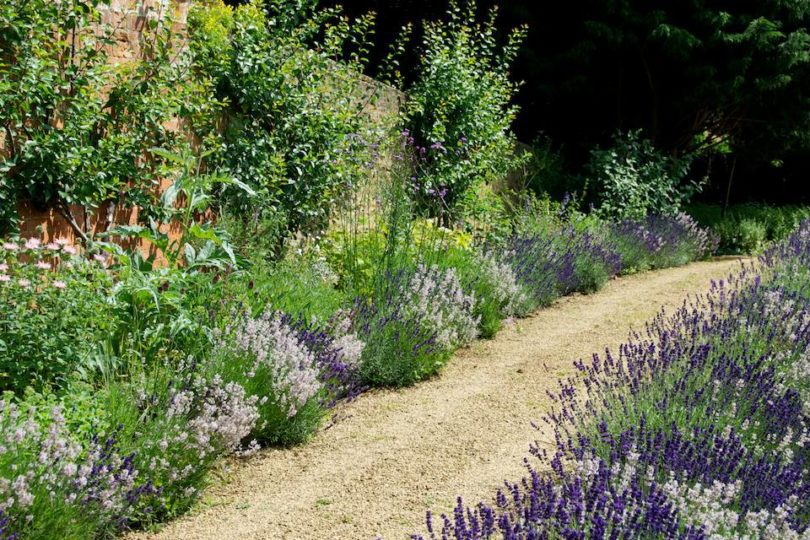
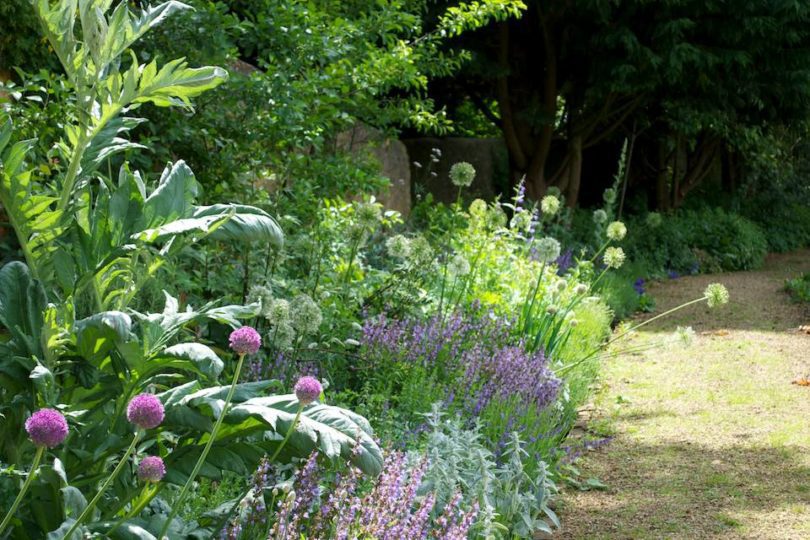
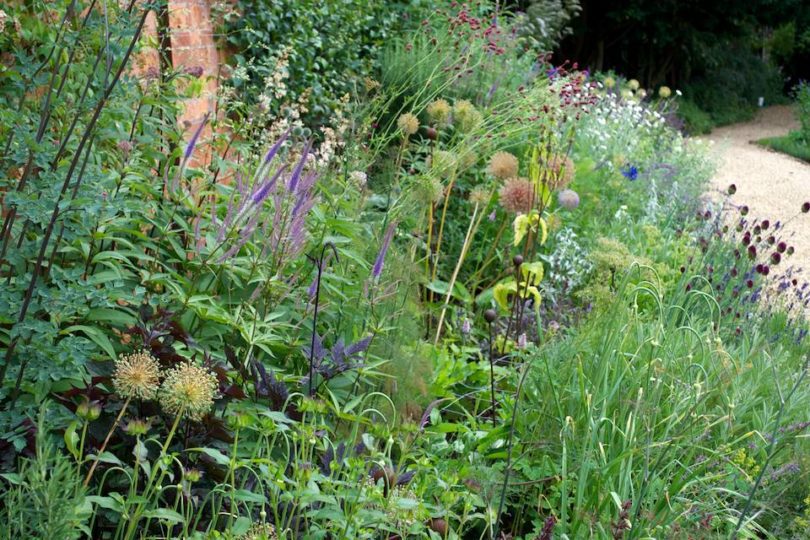


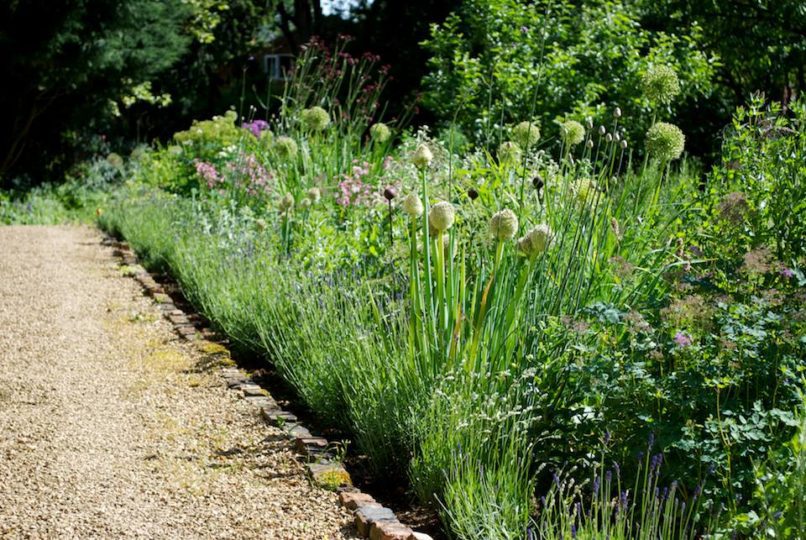

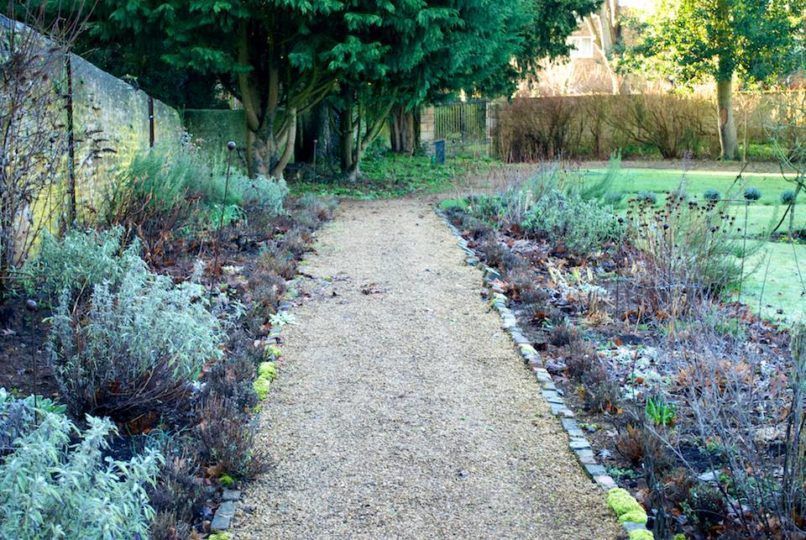
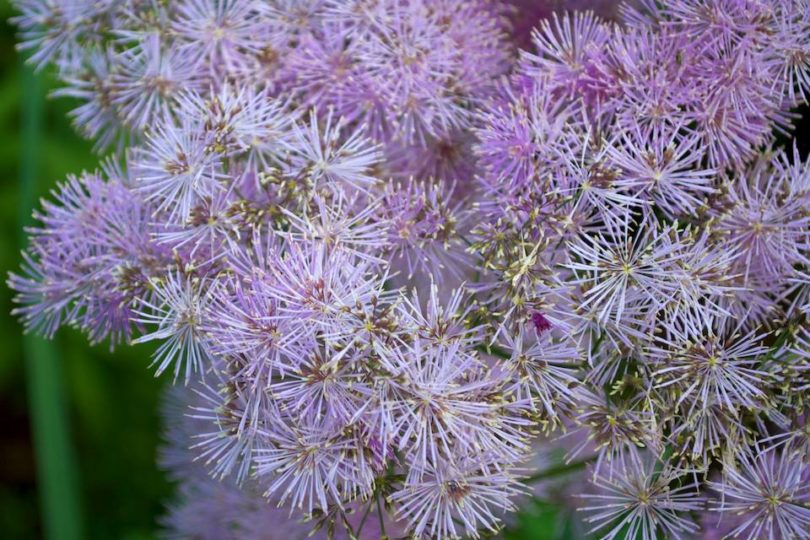
Learning to combat the overwhelming enthusiasm and excitement on planting new plants in the border and expecting them to be imminently huge, beautiful bellowing specimens, perfectly positioned, continues to be difficult. Some plants take ages to find their own, some die on you, wrong positioning, or worse the purchased (or carefully propagated) treasure does not actually suit the border at all. There are many doom scenario’s, which most gardeners will recognise. We have had them all, but that is all part and parcel of this game and what makes gardening the joy that it is.









In the past, this border was originally a childhood project of my husband and his sister, working it on their weekends off from school, into a charming herb border. The plan for its rejuvenation was to keep some of the original features of the border, such as the alternating Hidcote and Rosea Lavender hedge and established structural plants such as the Rosemary Miss Jessopp’s Upright, Salvia Officinalis, but to add more height, structure and variety to the border. The walls are home to two (presumed) Green Gage plum trees. One of them certainly is, as it has produced fruit, most of the likely Cambridge Gage variety. The other is in the capable hands of my husband, undergoing much needed re-invigoration treatment. A bounty of fruit is surely to follow soon, my wicker basket is at the ready….
Thanks to the magic of digital photography we have a visual progress log, starting from our initial efforts to the current day. Sadly, our enthusiasm clouded the foresight to take photos from a single spot, so the overview does not quite paint the accurate picture, but progress can clearly be seen. Timing wise, the photo’s were all taken in July apart from the 2010 photos which were taken in June.
July 2007: Result of initial exploits
The fruit trees are a tad wild, but the border shows much promise, with new numerous new additions, such as; Monarda Croftway Pink, Monarda Schneewittchen, Clary Sage, Cardoon, Verbena Bonariensis, Sedum Spectabile Brilliant, Eupatorium Maculatum Atropurpureum, Eupatorium Chocolate, Blue Echinops, Echinops Sphaerocephalus Artic Glow and for structure Buddleja Davidii. In addition, two new roses adorn the wall; Felicite Perpetue and Sir Cedric Morris. Lessons learned; the Cardoon was fast outgrowing its central position, starting initial doubt as to its suitability. Clary Sage, lovely as it is, is a biennial. We decided that due to the scale of this border and work involved we could not be involved with annuals or biennials. From now on perennials only. Furthermore this border will include only strong, tough plants. Careful staking of Delphiniums for example is not for us, instead height is achieved by plants such as Veronicastrum which have good upright habit and require limited to no support. The ramblers were to be joined by other varieties, so a sturdy wall support structure was required.
July 2008: The discovery of Alliums
Slightly overzealous allium purchasing, but the result is delightful. There is substantial, and continued, risk of brutal bulb impaling in this border, but that is something I have come to terms with. The Cardoon has made it to 2008, growing larger and testing our resolve. It does look lovely though. New plants planted that year; Bronze and Green Fennel, a range of lovely Thalictrums including the mighty Thalictrum Elin. Hardy geraniums planted in droves, including blue, purple, white and pink Phaeum, Renardi, Sanguineum varieties. Silver foliage is added; Silver mint and Stachys Byzantina. Stringent rules are being broken already; one annual variety is planted, Salvia Viridis in blue, pink and white. It is a prolific self seeder, so the planting thereof is a one off. Lessons learned: Cardoon getting too big, creating gaping holes in the border. Unfortunately, it also seem to attract masses of black fly, destroying new growth making the plant rather unsightly… prospects for its survival looks bleak. The Lavender hedge is undergoing rejuvenation. Pruned heavily in the autumn of 2007 and for 2008 flowering is limited to strengthen the plants. Where required replacements are planted. Pruning lavenders after flowering is crucial to stop them becoming leggy, as a result their pruning is now a big to do in our annual gardening calendar. The Monardas hated the wet winter, the Croftway Pinks and Schneewittchen did not make it and needed replacing. Monarda’s seem more sensitive than originally thought. Roses making good progress, though Felicite Perpetue has just the two shoots. Wishing there were more. The wall supports were a huge job for a project of this scale. Annoyingly materials, particularly suitably large steel supports are surprisingly difficult to come by, at least for amateur punters.
July 2009: One border becomes two
To achieve the desired effect, the border is expanded to become a set of parallel borders. The old lavender hedge in new border is proudly replaced, by the result of successful cutting exploits. New plants include; charming Goat’s Rue inspired by Jekka’s 2009 winning Chelsea Flower Show stand; Valerian officinalis, and much loved Agastaches. The planting is purposely similar in both borders in an attempt to achieve some form of symmetry. Plants are thriving in the new border as the soil is lighter and less claggy than the original border. Creative use of rusty plant supports help support the plants and combat the wind. Experimental planting of garlic bulbs in the border has worked, creating wonderfully weird allium type plants piercing through the thicket. Additions of audacious dark pinks, helps lift the overall look of the border by the planting of Allium Sphaerocephalon, Sanguisorba Officinalis and Knautia Macedonia both dwarf and tall varieties. For those whom noticed,… with a heavy heart, the Cardoon saga ended in 2009 with it’s rather brutal but required expulsion.
June 2010: Starting to look the part
The borders are at last, starting to bulge. The Thalictrums, in particular, are coming into their own. The Eupatoriums, particularly the Chocolate, (recently renamed Ageratina Altissima for some reason), add great structure and colour to the back of the border. Cirsium Rivulare, for additional punch, planted in both borders. They grow into huge plants, requiring more space than originally planned. Neighbouring plants are being smothered. Additional pink, white and dark pink Astrantias were planted. Astrantias are wonderful. Sturdy yet delicate flowers, very upright so no need for supports and they flowering for the entire season. Maxima, Roma, Major white Giant are lovely varieties but there are many more I have my eye on. One of my favourites in the border, is the Welsh onion which adds great architectural structure. The Russian Sages are doing well, although just as the Monarda’s, they tend to prefer the new border. Lessons learned; Hydrangea Paniculata was pruned back hard in March 2010, so unsurprisingly there are almost no buds/flowers this season. May have been a tad harsh, but it was getting too big. Hopefully 2011 will see it booming with flowers again. Similarly, the Buddleja was cut back hard, but the regrowth was rather leggy and thin. March 2011 pruning will be less harsh. The Valerian has been left to grow too big for too long. Needs splitting almost annually. The Echinops Sphaerocephalus Artic Glow is overgrowing and self seeding all over the place. Still like the plant, though its flowering period is a little short. Just as the blue varieties, it tends to look unsightly mid to bottom. Planting in front of them needs to hide that better.
All hope is on 2011…
